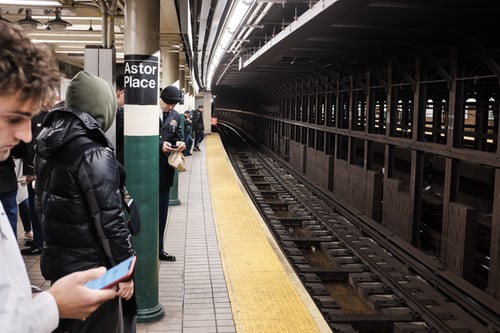Utilizing Social Media Data for Estimating Transit Performance Metrics in a Pre- and Post-COVID-19 World
Overview
Public transit is a key mode of transportation in megacities like NYC. The performance metrics of public transit such as journey time, service provision, station and subway environment, etc. are measured continually and provided to the public by the MTA for each month. The perception of transit service by the customer is also seen as a measure that may influence the choice of transit as a mode by the user. The perception of transit users can be affected by different factors ranging from, delay, availability of elevators, cleanliness of the station environment, and subway car facilities. In a post-COVID 19 lockdown time period, the transit service frequencies and ridership will be impacted. Also, the public perception of service may be based on completely different factors such as transit agencies’ safeguards against public health risks.
This perception of transit can be captured through the sentiment of posts made by users on social media. Performance metrics based on user perception can provide the service provider a customer-facing view of their service and help enhance their service and address the user concerns, especially from a public health standpoint in a post-COVID lockdown world, appropriately.
Research Objectives & Deliverables
Various tasks involved in the successful completion of the proposed project will include the following:
- Literature Review
- Entails a review of literature of past studies that utilized social media in the domain of public transit. Social media has been used by agencies to address customer service issues and information dissemination. Few studies also propose the use of social media to assess customer perception of public transit service. Various methodologies and metrics proposed in the literature for customer perception of transit will be compiled in this task.
- Collecting & processing transit data
- This task is to collect and analyze real-time transit data to extract relevant performance metrics. Data includes realtime MTA transit data, service alert data, and service metrics comparisons before and after COVID-19.
- Social media data
- Involves the collection, processing, and analysis of social media posts regarding public transit in NYC. Data will be compiled, extracted, and analyzed for the customer sentiments within the media posts both before and after the pandemic.
- Co-analysis of social media and transit data
- Entails a comparison of transit performance metrics estimated with user sentiments. User-facing metrics will be evaluated.
- Production of a final report presenting the findings of all the tasks on data collection, processing, and analysis as a final report.
- Production of final metrics indicating public perception of subway service, station environment, and public health measures before and after COVID-19 lockdown based on social media
- Depending on the findings of the project, an algorithm to generate the metrics measuring public perception of transit service will be made available.
| Principal Investigator | Camille Kamga |
| Funding Source | C2SMART Center ($65,000) CCNY ($32,486) |
| Total Project Cost | $97,486 |
| USDOT Award # | 69A3551747124 |
| Implementation of Research Outcomes | This study will aim to study the perception of public transit service from a customer viewpoint by analyzing the sentiment in social media posts. There may be several factors that can influence the perception of service such as on-time performance, station environment, perception of public health safety during and after the COVID pandemic, etc. In this study, we try to determine different factors that can influence public perception. We will also attempt to quantify the perception using the sentiment in social media posts. |
| Impacts/Benefits of Implementation | Performance metrics based on user perception can provide the service provider a customer-facing view of their service and help enhance their service and address the user’s concerns appropriately. These may also help understand the reasons for users’ choice of the particular mode. Furthermore, the need for investment for obtaining these user-based metrics is also very low, given that they use publicly available social media posts rather than traditional ways such as customer surveys and interviews. Analysis of user sentiment in real-time may provide a predictive measure of customer perception of any changes in service. Any anomalies in public perception of public health safety measures in a post-COVID world can also be addressed promptly using such an approach. |




